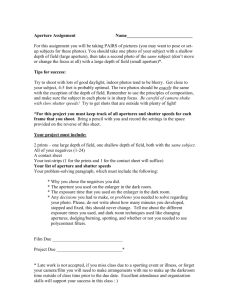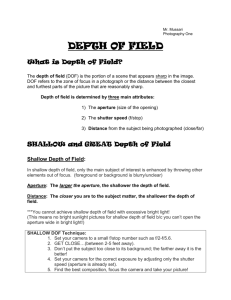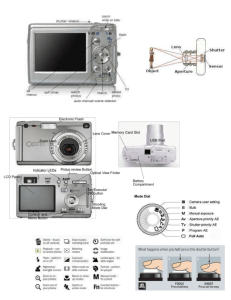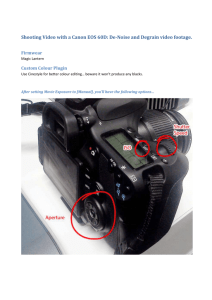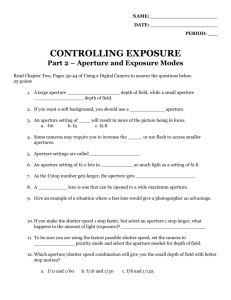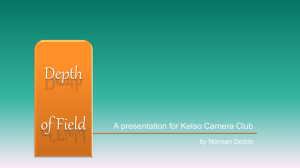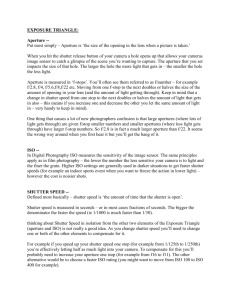Aperture
advertisement
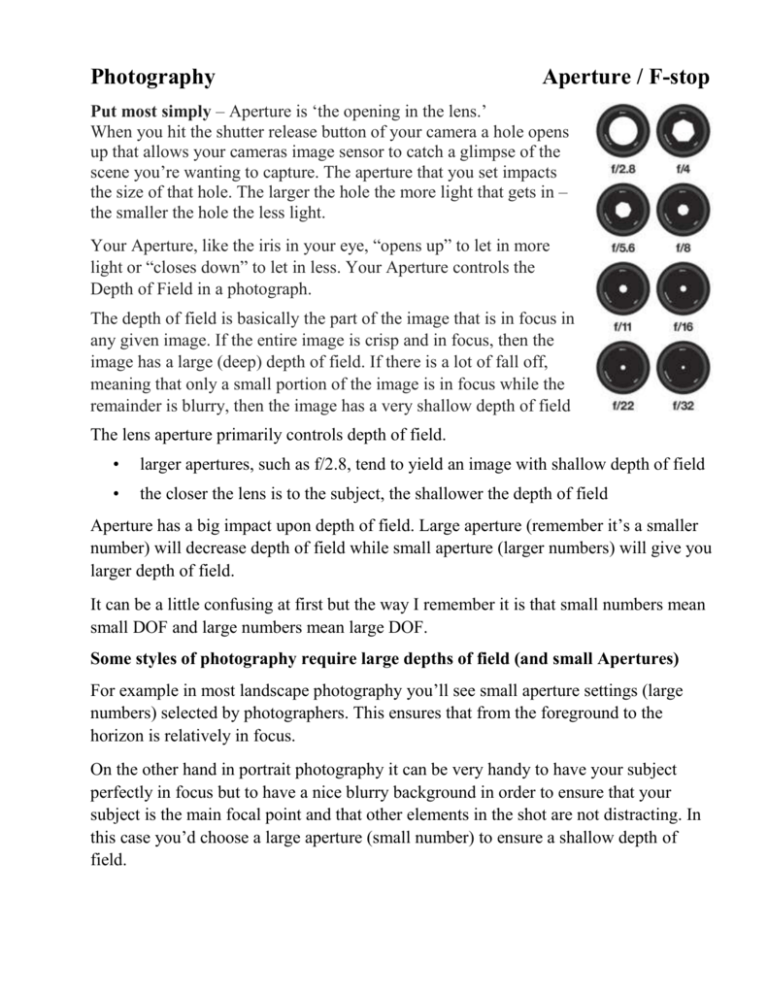
Photography Aperture / F-stop Put most simply – Aperture is ‘the opening in the lens.’ When you hit the shutter release button of your camera a hole opens up that allows your cameras image sensor to catch a glimpse of the scene you’re wanting to capture. The aperture that you set impacts the size of that hole. The larger the hole the more light that gets in – the smaller the hole the less light. Your Aperture, like the iris in your eye, “opens up” to let in more light or “closes down” to let in less. Your Aperture controls the Depth of Field in a photograph. The depth of field is basically the part of the image that is in focus in any given image. If the entire image is crisp and in focus, then the image has a large (deep) depth of field. If there is a lot of fall off, meaning that only a small portion of the image is in focus while the remainder is blurry, then the image has a very shallow depth of field The lens aperture primarily controls depth of field. • larger apertures, such as f/2.8, tend to yield an image with shallow depth of field • the closer the lens is to the subject, the shallower the depth of field Aperture has a big impact upon depth of field. Large aperture (remember it’s a smaller number) will decrease depth of field while small aperture (larger numbers) will give you larger depth of field. It can be a little confusing at first but the way I remember it is that small numbers mean small DOF and large numbers mean large DOF. Some styles of photography require large depths of field (and small Apertures) For example in most landscape photography you’ll see small aperture settings (large numbers) selected by photographers. This ensures that from the foreground to the horizon is relatively in focus. On the other hand in portrait photography it can be very handy to have your subject perfectly in focus but to have a nice blurry background in order to ensure that your subject is the main focal point and that other elements in the shot are not distracting. In this case you’d choose a large aperture (small number) to ensure a shallow depth of field. Macro photographers tend to be big users of large apertures to ensure that the element of their subject that they are focusing in on totally captures the attention of the viewer of their images while the rest of the image is completely thrown out of focus. Moving from one f-stop to the next doubles or halves the size of the amount of opening in your lens (and the amount of light getting through). Keep in mind that a change in shutter speed from one stop to the next doubles or halves the amount of light that gets in also – this means if you increase one and decrease the other you let the same amount of light in – very handy to keep in mind). One thing that causes a lot of confusion is that large apertures (where lots of light gets through) are given f/stop smaller numbers and smaller apertures (where less light gets through) have larger f-stop numbers. So f/2.8 is in fact a much larger aperture than f/22. large (deep) depth of field Small (shallow) depth of field



